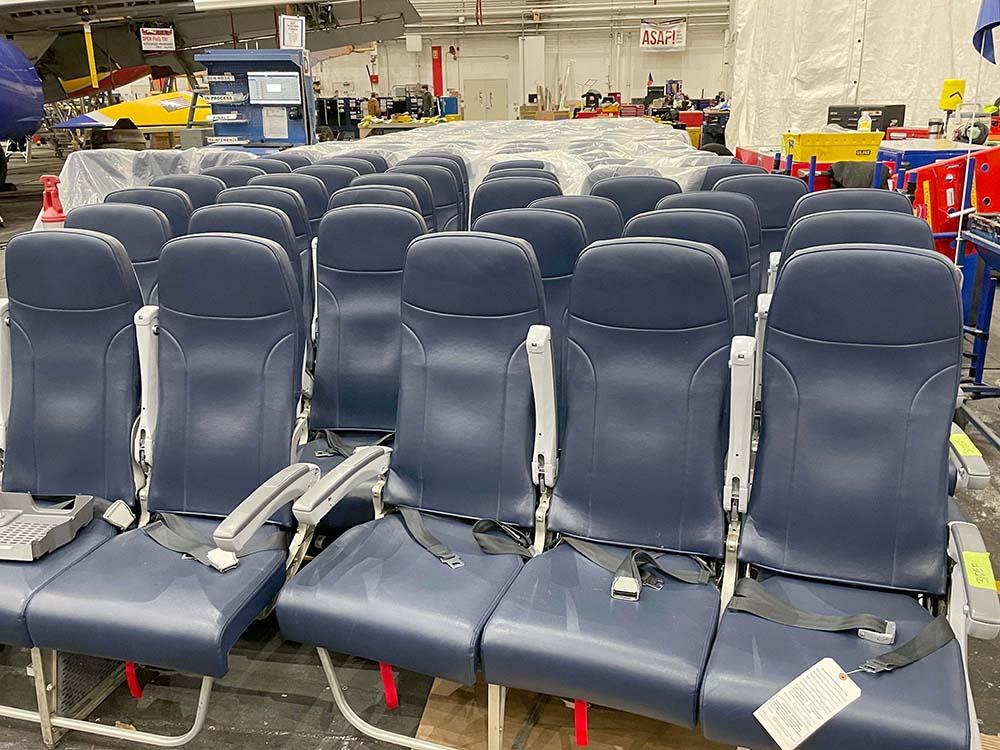
Open Seat?
Aviation Technical Services (ATS) has been busy growing its component repair, engineering solutions and technical training businesses. Aviation Week visited its headquarters in Everett, Washington, on Dec. 8 to get an inside look at what’s new since a tour of its Hangar 1 facility and components facility in late 2017.
The facility was full of aircraft from several U.S.-based commercial airlines undergoing maintenance work, including C checks, aircraft transitions and painting.
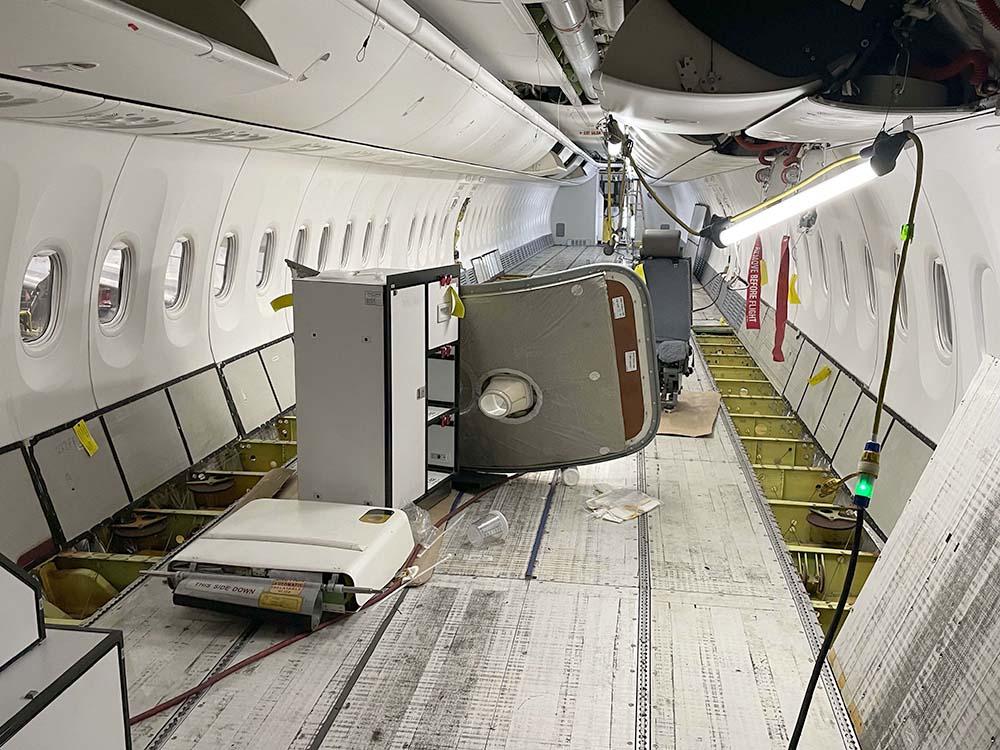
Inspection Phase
This Boeing 737 was undergoing a C check during Aviation Week’s visit. ATS was finishing the inspection phase of the check.

Lease Return
An Airbus A320 lease return aircraft undergoes paint stripping. ATS has one main painting location at its maintenance hangar, with a second location available when required. According to Michael O’Callaghan, vice president of airframe maintenance, ATS offers paint as a “nice to have” capability for customers whose aircraft are undergoing larger maintenance and modification work scopes.
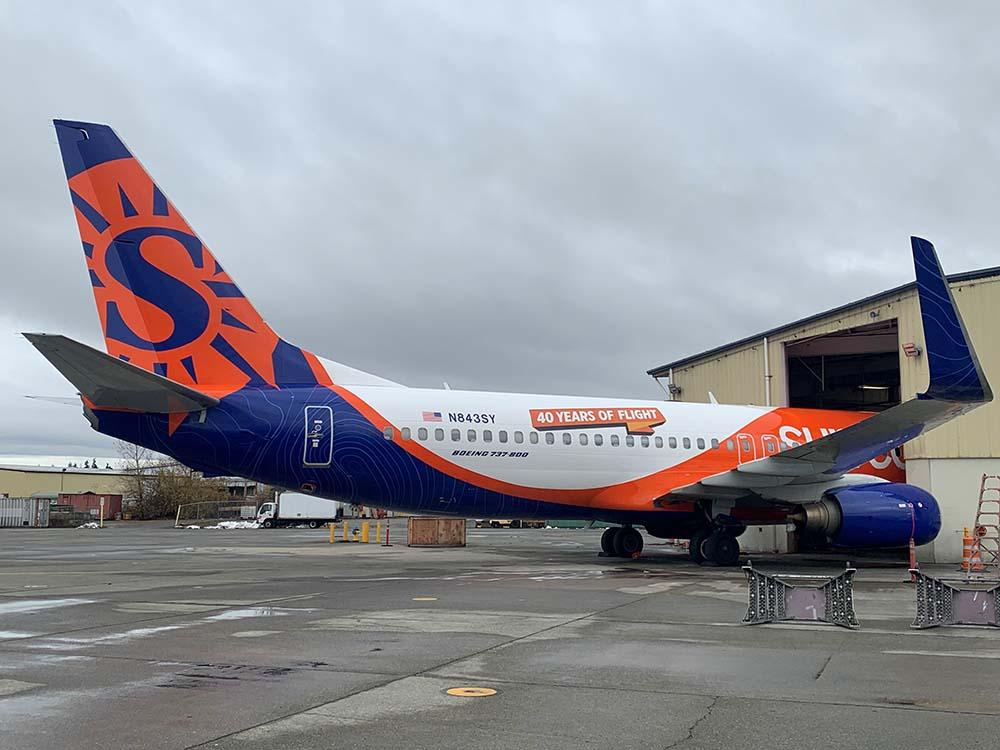
Sun Country Anniversary
ATS painted this Sun Country Boeing 737-800 with a special 40th anniversary design. The aircraft was also receiving interior modifications and fleet standardization modifications.
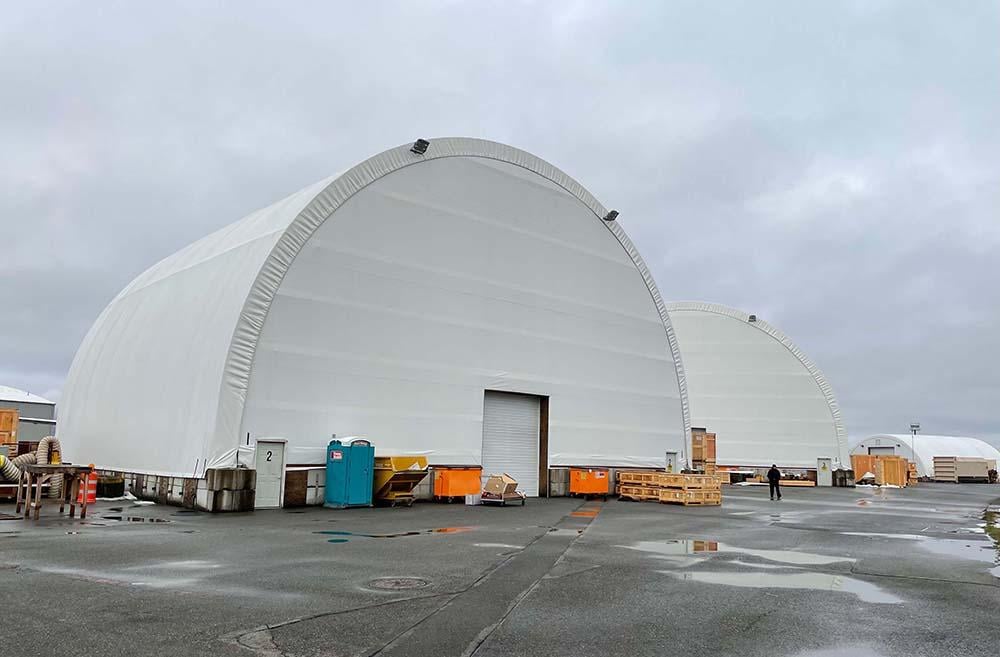
Tents
ATS has two permanent nose docks outside its hangar, as well as three outside tents large enough to house widebody aircraft nosed in up to the wings, which enable it to perform additional maintenance outdoors.
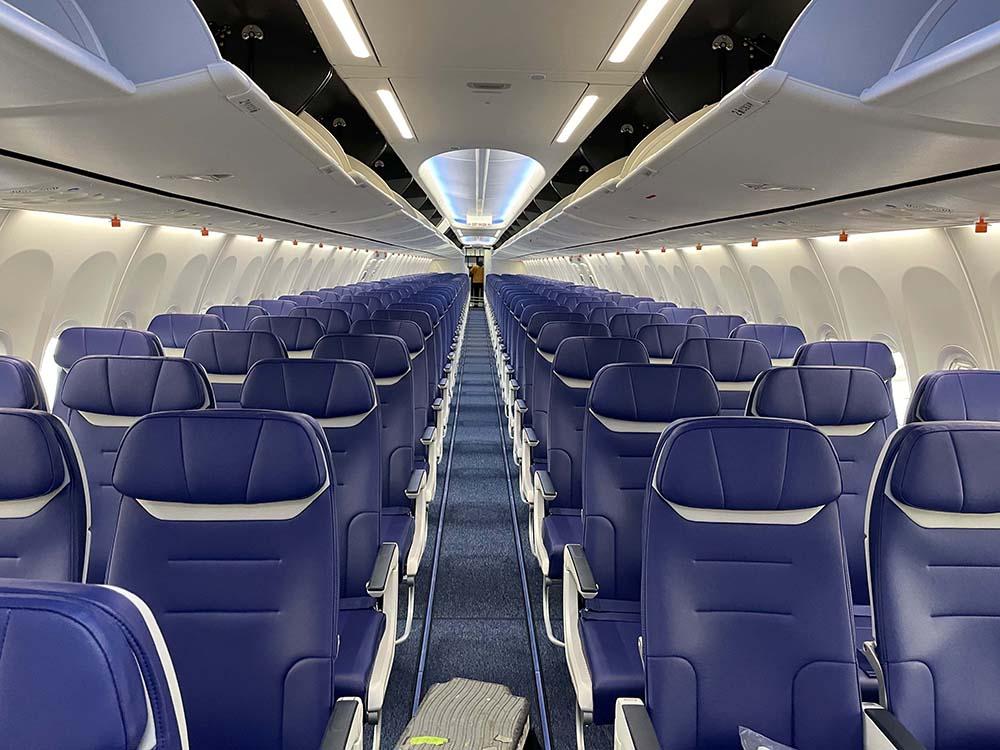
MAX Interior
This 737 MAX was finishing the process of receiving a new interior.
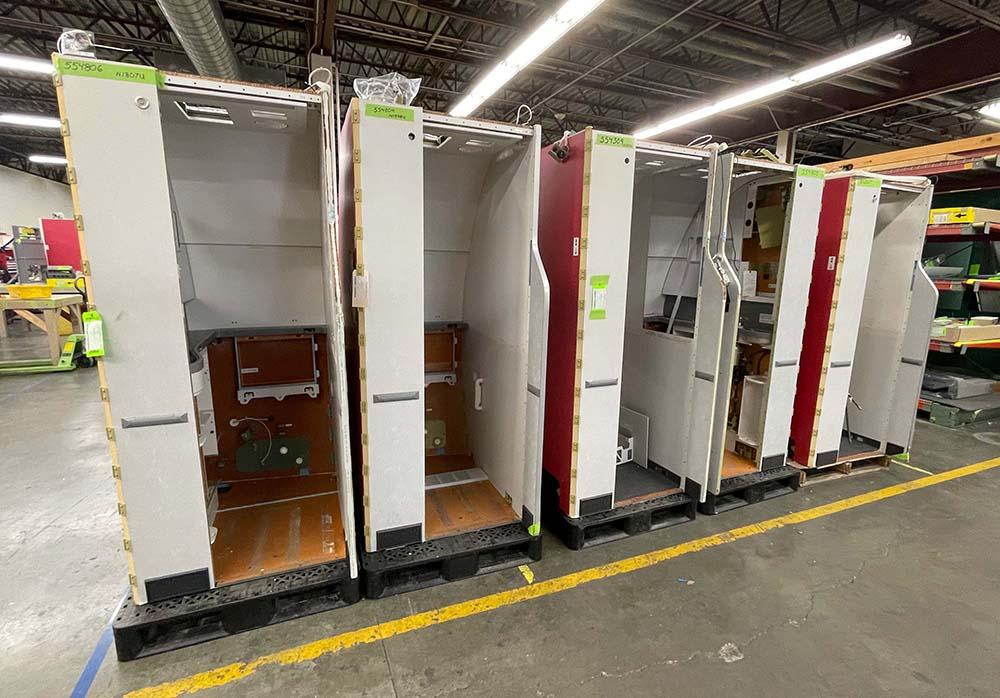
No Line!
A row of aircraft lavatories undergoing repairs in ATS’s interior shop.
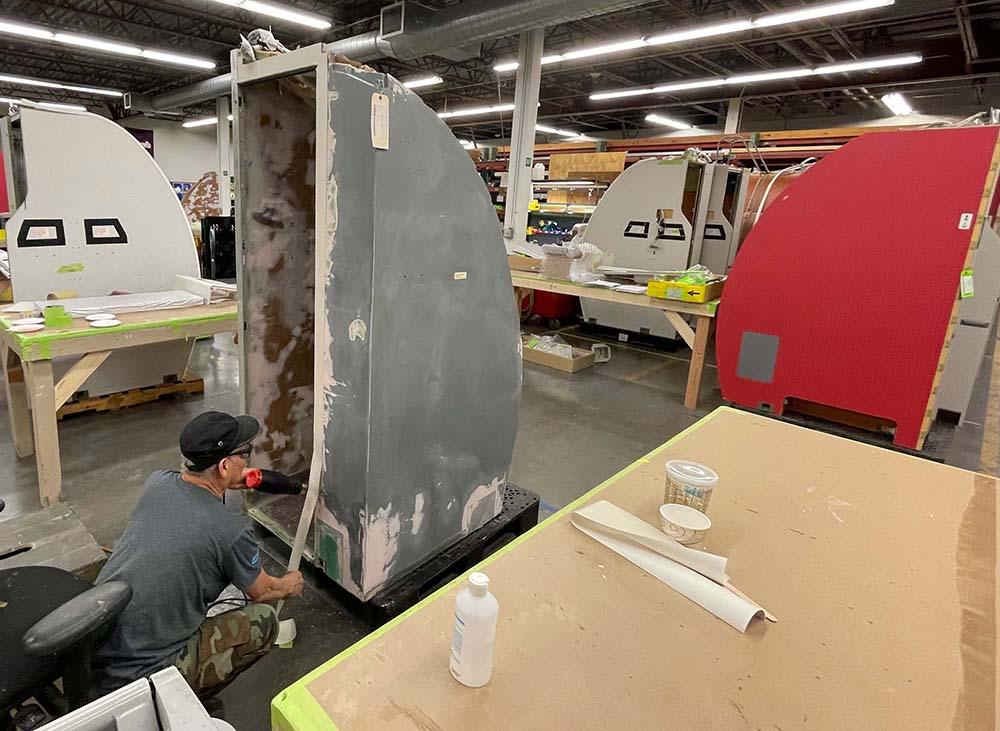
Lav Repair
A technician performs repair work on an aircraft lavatory.
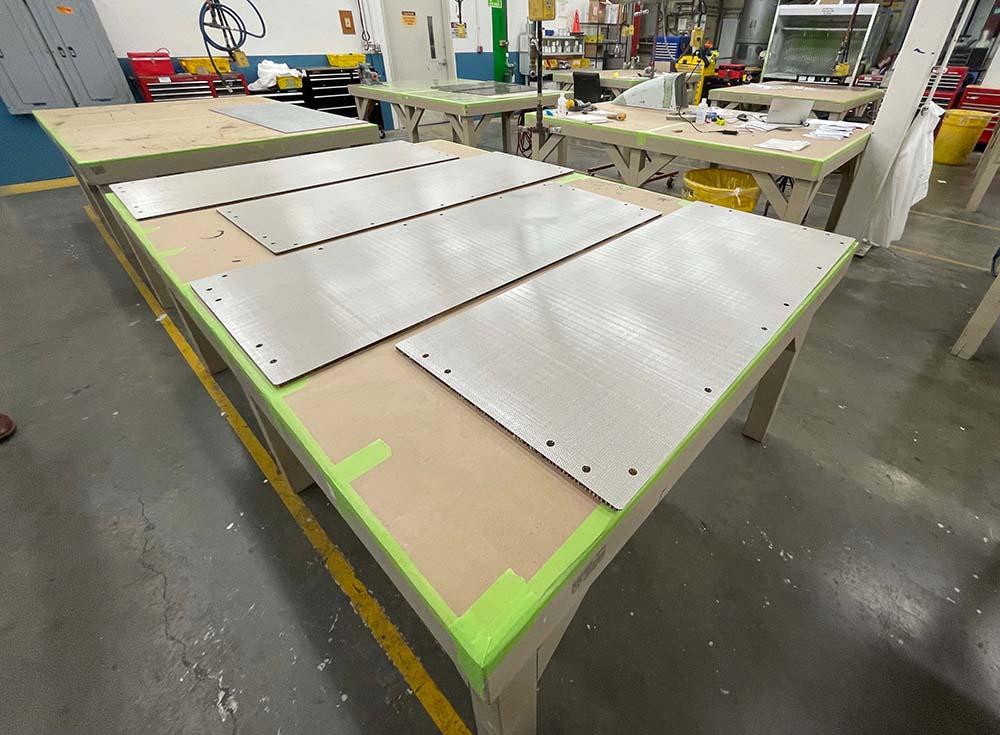
Composite Repair
ATS CEO Paul Dolan says in-house composite repair capability has been critical in mitigating ongoing aftermarket supply chain issues. Pictured here are new composite-based interior floorboards being fabricated in ATS’ back shop.
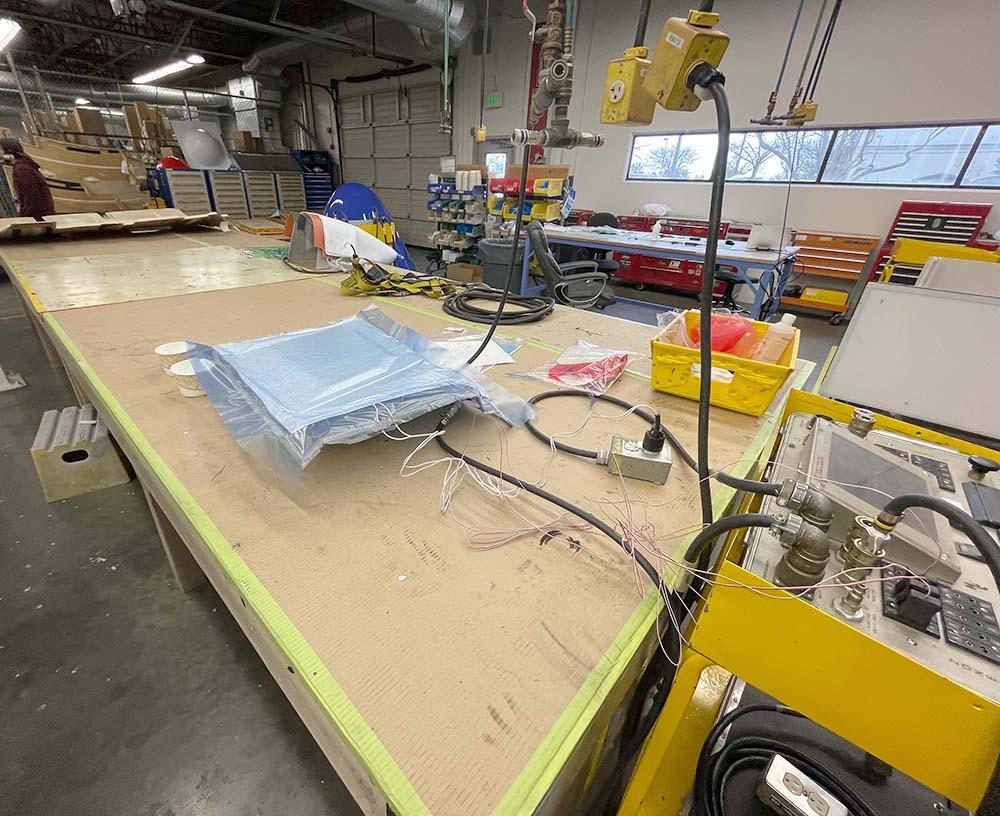
Fairing Repair
A wing-to-body fairing repair using Heatcon composite repair equipment.
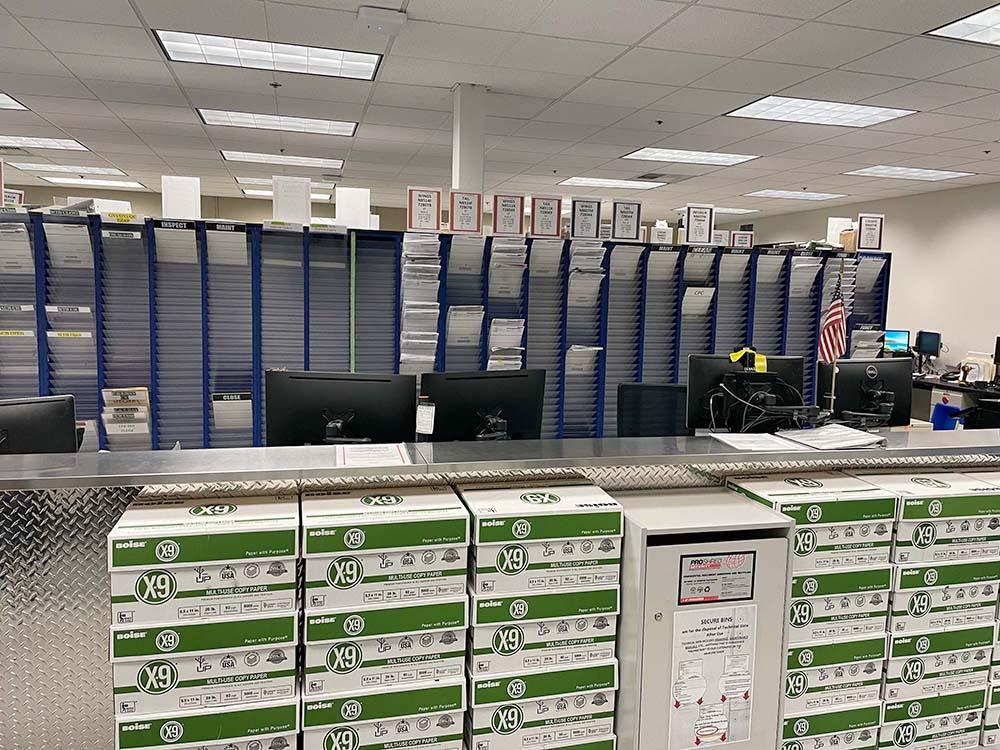
Maintenance Control
Seen here is the maintenance control area, which handles all of the required paperwork for ATS’ MRO operations. While some of ATS’ airline customers have not transitioned to paperless maintenance operations, Southwest Airlines recently completed migration to IFS Maintenix software, which required ATS to train its staff to use the software. ATS’ technicians must also be trained to use the enterprise resource planning software systems used by its other airline customers.
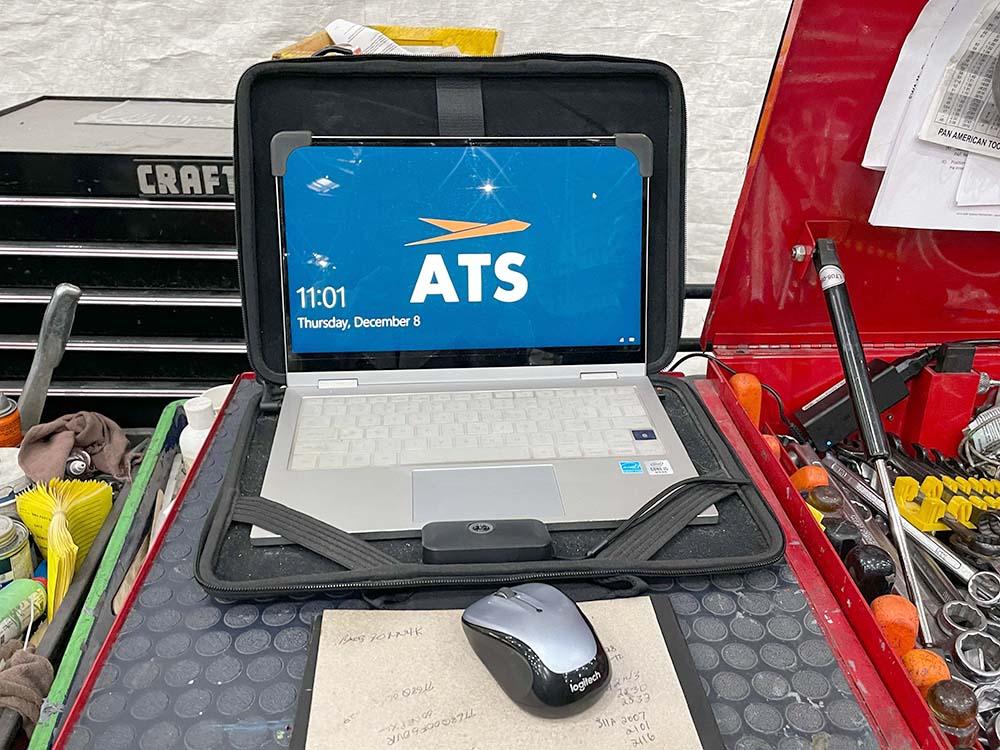
Taking Ownership
ATS issues each of its technicians a new laptop to use for digital maintenance operations. Technicians are allowed to keep the devices after three years’ worth of use, at which point ATS removes all maintenance data and software and then issues technicians a new device. According to Mark Saretsky, senior director of operational excellence at ATS, this practice has resulted in a lower rate of broken devices since technicians are motivated to keep them in good working condition.
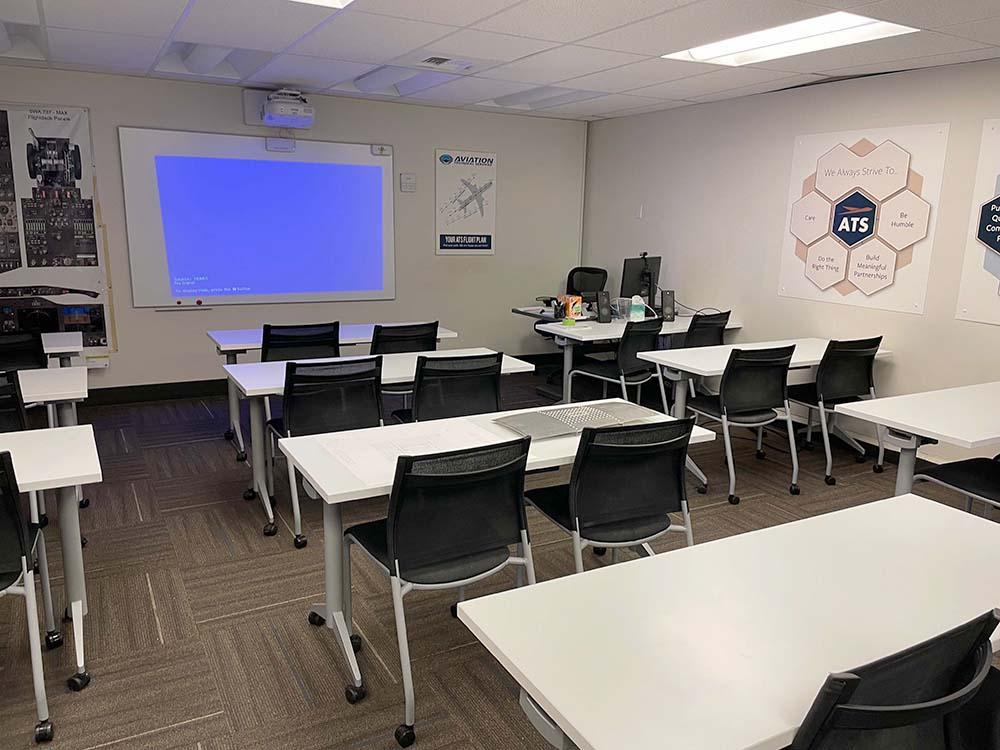
Back To School
Digital devices are also important for ATS’ apprenticeship program, ATS Academy, which was launched in 2019. Over the course of 18-24 months, apprentices receive a mix of classroom and on-the-job training to prepare for the FAA Airframe License test. Apprentices are also prepared for the type of work they will encounter in the hangars and workshops at ATS, including how to electronically access aircraft maintenance data.

Hands-On
Early in the training process, new apprentices learn basic hands-on tasks such as drilling, riveting and wiring to help them feel more comfortable once they hit the hangar floor. According to Seth Jacobsen, director of technical training at ATS, the aim is to familiarize apprentices with the types of hands-on tasks they will encounter and “take away the fear factor.”

Partnering Up
An apprentice works with a lead at ATS Components’ accessory shop. Apprentices are paired up with master mechanic leads to learn more about how maintenance is performed at ATS. Jacobsen says ATS instructors work to identify apprentices’ aptitude in various areas of maintenance to figure out specialty areas where they might excel.
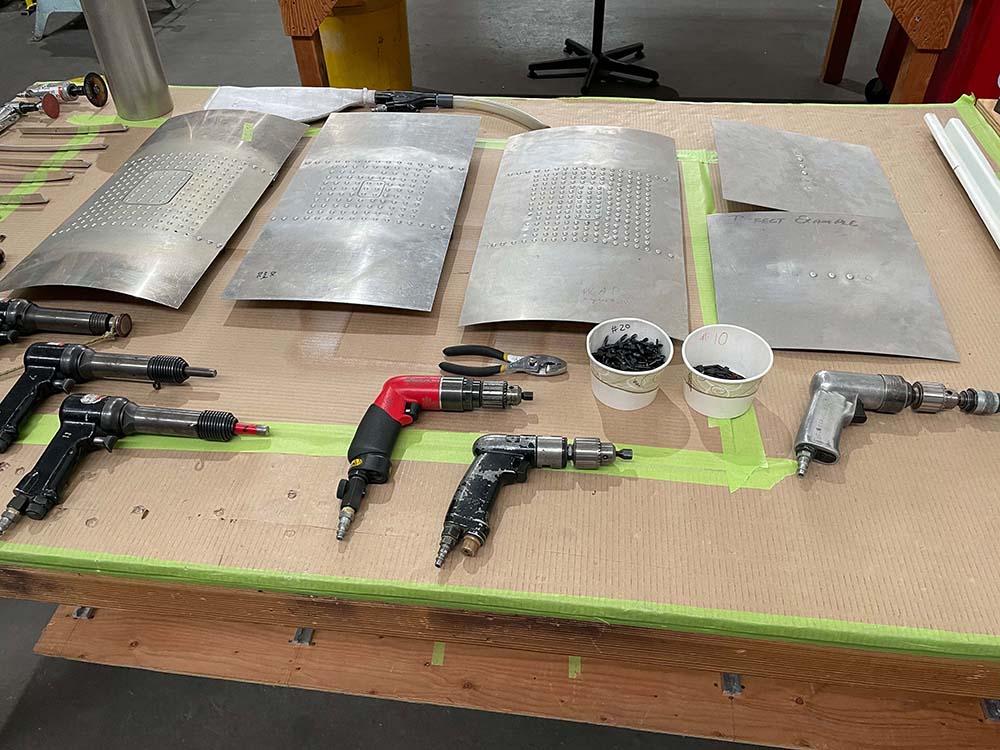
Beyond Basics
Pictured here is a table set up for ATS Academy’s “Beyond Basics” class. According to Jacobsen, the program has graduated 130 apprentices up to the mechanic level since its launch in 2019. These are “mechanics that [ATS] would most likely not have otherwise.”
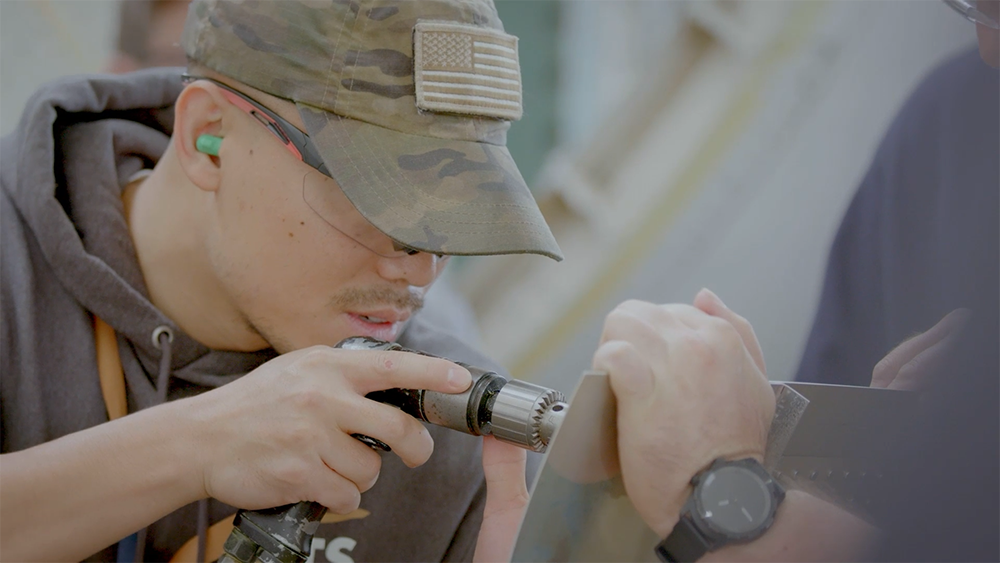
Upskilling and Reskilling
Dolan says the apprenticeship program and ATS Academy’s role in upskilling and reskilling existing staff has also translated to improved safety and quality on the shop floor. Metrics such as injuries and mis-drills have dropped since ATS began its training efforts, which has saved money and improved its reputation with customers, says Dolan.

Expanding Component Business
ATS also has been steadily growing its components business. In the past few years it has acquired Texas Pneumatic Systems, American Cooler Service and Ranger Air. Its component repair facility in Everett (pictured here) has primarily focused on components for Boeing 737 aircraft, but Saretsky, who leads the facility, says it is beginning to ramp up maintenance for 787 components, as well. In 2018 the facility added a clean room (the white room visible near the back) to accommodate composite work for a large program with Boeing to support 787 inlet cowls.

787 Slat Tracks
The Everett components facility is focused on 787 slat tracks, a new product line. Saretsky says customers are seeing heavy corrosion on these parts and there is not a component maintenance manual repair currently available, so ATS partnered with a customer to develop a repair. So far, ATS has completed these repairs for eight aircraft, comprising 28 tracks per aircraft.

737NG Ramp Up
The facility is also ramping up to prepare for 737NG airworthiness directives that are expected to be issued in 2023. As the aircraft type ages, Saretsky says a lot of its structural parts are experiencing wear and tear. “We found that rather than doing repairs to skins and leading edges, we’re now fabricating [items] like skins to help control some of the repair costs,” he says. “As the fleet ages, we’re having to get more involved with engineering and working on technical solutions to help keep costs in line, because replacing with new parts is really expensive.”
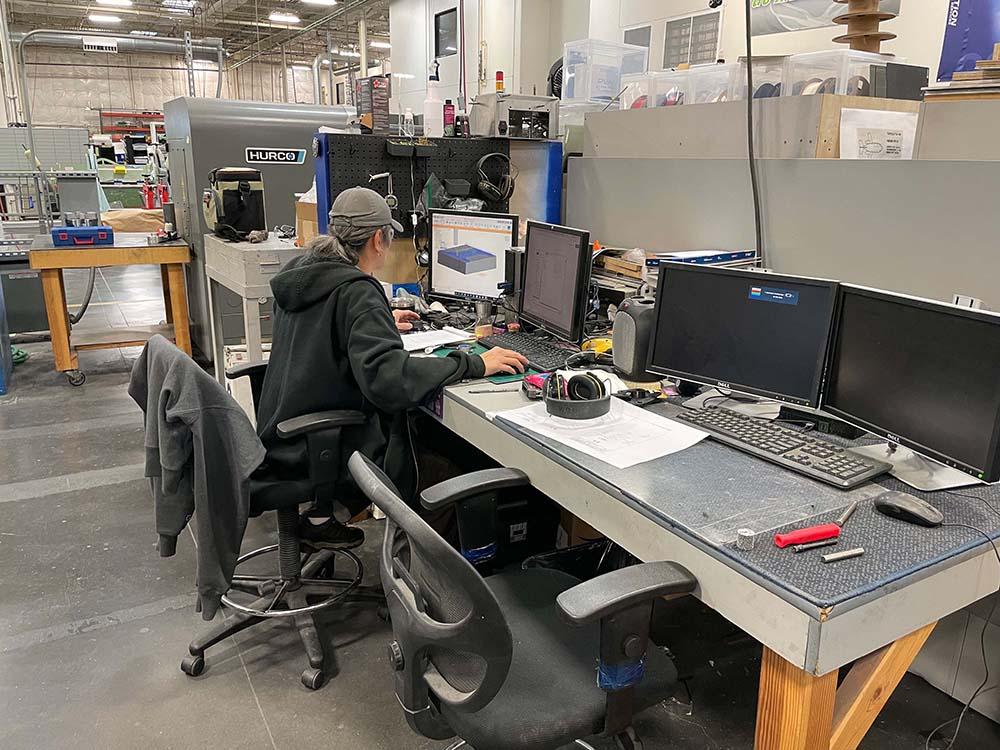
CNC Machining
Fabrication happens in the facility’s machine shop, where all fabricated parts go through CNC machining. The facility’s staff develops ATS’ own engineering models and programs the computers.
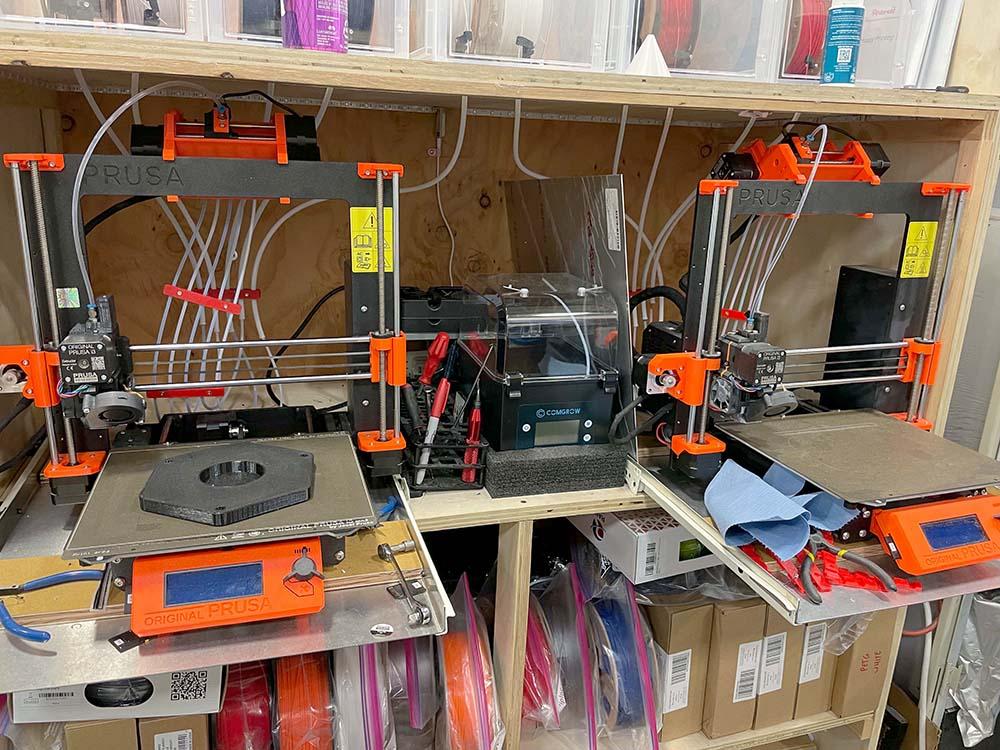
Additive Manufacturing
ATS also recently introduced 3D printers in the machine shop to additively manufacture items such as end caps and tooling.
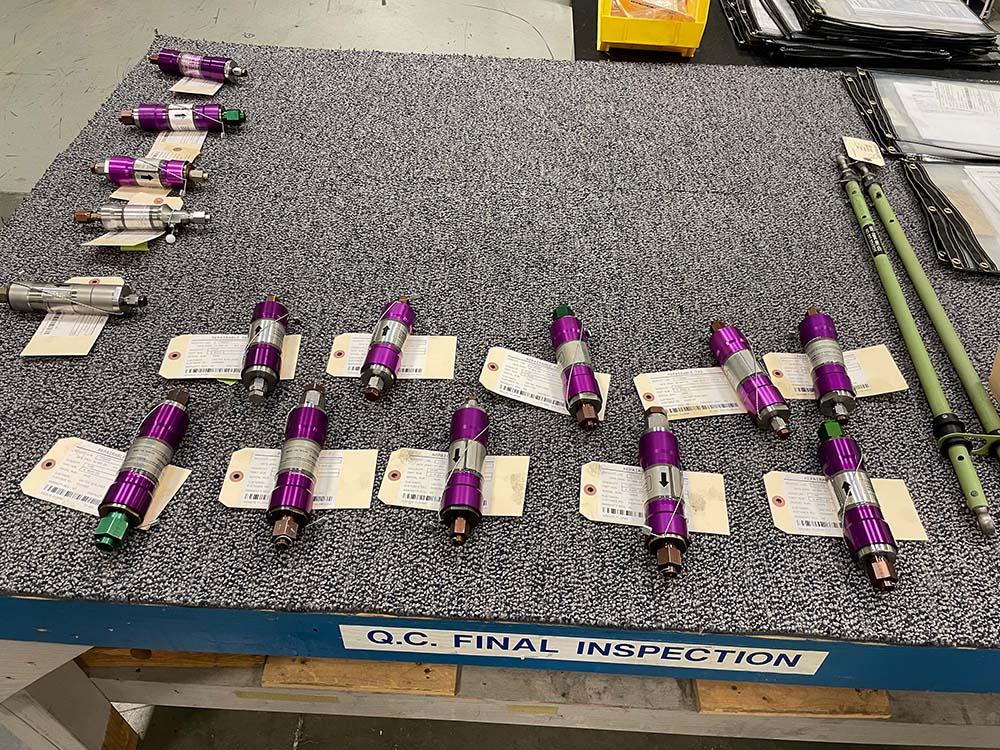
Hydraulic Fuses
The components team works closely with ATS’ Engineering Solutions team to develop repairs, supplemental type certificates and PMA parts. “We look for high-dollar parts that we see failing a lot that are causing parts to become unrepairable,” says Saretsky. When it identifies such a part, the components operation works with Engineering Solutions to develop PMA part solutions and repair specs that can be used for customers. “We’ve come up with a solution that allows us to be cost competitive,” he adds. The hydraulic fuses pictured above are an example of one PMA part ATS has developed.

Cargo Door Latch
Pictured here is ATS’ EverLatch cargo door latch, one of its PMA parts aimed at reducing costs for customers. ATS says the latch design eliminates door skin and latch housing damage, improving the performance, reliability and service life of the external door cover. The part can be installed quickly, without the need for special tooling on Boeing 737NG aircraft, which ATS says minimizes maintenance costs and aircraft downtime.
A behind the scenes look at ATS’ growing MRO capabilities in Everett, Washington.
